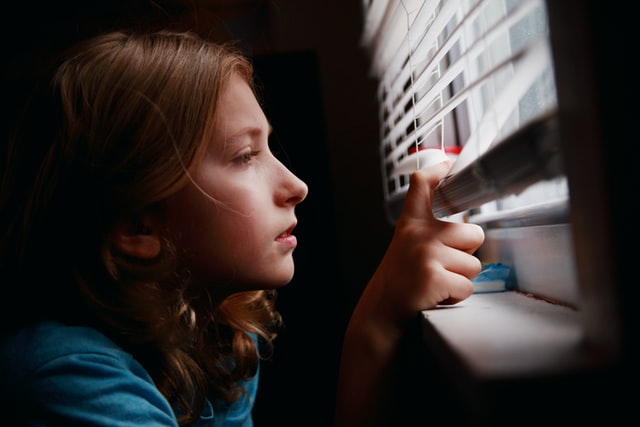COVID-19 and the New Normal: Resources for Addressing Challenges in the CTE Classroom and Workforce
 All U.S. states are beginning to relax stay-at-home orders, but health officials caution that there are still challenges ahead in responding to the current novel coronavirus (COVID-19) pandemic. At the start of the pandemic PK-12 and postsecondary educational systems had to quickly pivot all instruction and learning to online. While most community colleges already had some form of online learning infrastructure in place prior to the pandemic, there is still some course content, especially career and technical education (CTE), that cannot feasibly be delivered in an online platform. CTE programs largely require hands on skill development and learning. For instance, learning how to draw blood, operate heavy machinery, or welding are skills that cannot be practiced or simulated online, and so in the wake of the pandemic most community colleges across the nation have temporarily suspended CTE courses that require instruction in-person/on campus.
All U.S. states are beginning to relax stay-at-home orders, but health officials caution that there are still challenges ahead in responding to the current novel coronavirus (COVID-19) pandemic. At the start of the pandemic PK-12 and postsecondary educational systems had to quickly pivot all instruction and learning to online. While most community colleges already had some form of online learning infrastructure in place prior to the pandemic, there is still some course content, especially career and technical education (CTE), that cannot feasibly be delivered in an online platform. CTE programs largely require hands on skill development and learning. For instance, learning how to draw blood, operate heavy machinery, or welding are skills that cannot be practiced or simulated online, and so in the wake of the pandemic most community colleges across the nation have temporarily suspended CTE courses that require instruction in-person/on campus.
The pandemic has also been economically devastating. The last time the U.S. experienced such a rising unemployment rate was the Great Depression. Unfortunately, many CTE students will find that the careers in industries they have been training for are jobs because of the pandemic that are now considered to be at-risk, with food services, retail, and hospitality among the most vulnerable jobs. We discuss the challenges community colleges are wrestling with in delivering quality CTE programming amidst the COVID-19 pandemic and offer some suggestions for how institutions can navigate these challenges. We also discuss how certain programs of study and industries are faring as well as critical student equity and access concerns community colleges must consider in the midst of a pandemic.
Programs of Study and Industry Challenges
Programs of Study and Industry Challenges
Health Sciences
CTE health science programs are based on a theory/lab model in which students spend part of their programs in the classroom and part of their programs in class labs and onsite clinical rotations in healthcare settings. Adapting to changes due to the COVID-19 pandemic highlights the multiple levels of governance surrounding health care professionals and their education. States, colleges, hospitals, and professional organizations are all integral to both student experiences and the medical professional workforce. Due to widespread campus closures with simultaneous increases in the demand for health science program graduates, alternative means of gaining certifications in nursing assisting, for example, are increasing. For instance, NextSteps out of Seattle, Washington, introduced The National COVID-Ready Caregiver Certificate comprised of “self-paced, short-form videos and assessments.”
Furthermore, community colleges had to quickly address current students’ need for required clinical hours. In an effort to balance flexibility while adhering to the rigor of healthcare professional licensure and certification guidelines, the state of South Carolina allowed CNA programs to replace their required clinical hours with simulations and their classroom hours with distance learning with no reduction in required contact hours, and the states of Massachusetts and New York outlined guidelines for institutions wishing to apply for the same kinds of considerations. Certainly, clinical rotations are not the sole purview of educational institutions. Several colleges have petitioned their state governments to change the guidelines to allow nursing students an increase in simulated clinicals due to the decreases in hospital-based options. Maryland, Massachusetts, Kentucky, Arizona and Ohio quickly offered such adjustments. Due to COVID-19 directly affecting patients’ respiratory systems, already existing shortages of respiratory therapists directly affect pandemic containment. New York, Massachusetts and Ohio issued directives that allowed senior nursing and respiratory therapy students to enter the workforce while earning credits toward graduation and to utilize temporary licensure until testing centers reopen. North Carolina and New York are also revamping guidelines to make it easier for retired respiratory therapists to reenter the field.
Culinary and Hospitality
In community colleges, culinary and hospitality programs continue to be a popular choice for students. These industries represent, together, the largest employers in the country. According to a report by Deloitte, in 2017, U.S. hotel bookings increased to $185 billion, while the restaurant industry grew to $799 billion. The size of these industries makes them vital to the overall health of the nation. However, according to the National Restaurant Association, due to COVID-19 the industry as a whole has lost more than three million jobs and more than $25 billion in sales in March 2020 alone. Furthermore, the hotel industry has lost 70% of its workforce and is expected to lose $3.5 billion weekly for the duration of the pandemic. Based on this, culinary and hospitality programs have moved their efforts to online instruction.
The majority of culinary and hospitality programs in community colleges are conducted in-person. Many community colleges are currently searching for new alternatives to deliver their content through online learning. For example, Harper College in Illinois, on April 13, moved all their instruction digitally. For labs, internships, and clinical, they are still exploring options and are working directly with faculty and students to ensure these programs can continue operating. In 2019, Harper College had 41 students enrolled in their culinary and hospitality programs, while the licensed nursing program had 383 students. The slow enrollment might pose a challenge for administrators, which have to decide what programs will get the necessary resources and attention. While Harper enrollment is low, community colleges in the state of Illinois, in 2019, enrolled over 2,500 students in their culinary and hospitality programs. The culinary and hospitality industry has been dealt a devastating blow during this pandemic, and community colleges have to decide which option to choose for the training of culinary and hospitality workers.
Culinary workers are central to the fight against COVID-19 and could provide additional meals to high-risk populations.
While certain aspects of the culinary and hospitality programs can be delivered digitally, other elements cannot, particularly the cooking component. At this moment, these programs must think creatively to continue operating during this pandemic. For example, Southcentral Kentucky Community and Technical College is delivering instruction digitally, and students do their projects at home. While imperfect, this might ameliorate the current instructional problems facing these programs. Furthermore, turning to CTE culinary kitchens to fight against COVID-19 would be useful. Given that community college students suffer from high food insecurity, culinary programs could provide meals for current students and community members. While this is a lot to ask, culinary workers are central to the fight against COVID-19 and could provide additional meals to the underserved, high-risk populations.
Transportation, Delivery, and Distribution
Similar to the culinary and hospitality industries, the transportation, delivery, and distribution industries have also experienced an economic downturn. These CTE programs, including truck driving and distribution, halted in-person instruction. For example, in 2019, Illinois community colleges enrolled 1,497 students in their ground transportation, aviation, and driving programs. Olive-Harvey, one of the City Colleges of Chicago, enrolled 404 students in these types of programs in 2019, representing almost 27% of the total for the entire state. Yet, there is still a need for delivering food and supplies during the pandemic.
The transportation industry, not only of cargo but also of people, have been affected as well. A clear example of this has been the airline industry, which has reduced revenue by 90% and a 95% reduction of travel. Furthermore, public transportation and subway systems have lost the majority of its daily commuters. Fortunately, public transit funding comes from federal, state, and local sources, rather than the box fares. In the transportation and delivery industries, however, goods continue to be an essential component in the fight against COVID-19. For example, Amazon.com's delivery has increased dramatically, and their stock continues to skyrocket. Despite worker’s complaints, they have ramped up their transportation and delivery production.
Transportation and delivery industries are essential to the country’s overall health. CTE programs in transportation, with their driving programs, could be used to deliver equipment and foods to the hardest-hit areas while providing students with tangible, real-life experiences. Community colleges can play a central role in the fight against COVID-19. Whether it is cooking for their students or delivering essential goods, community colleges can use their infrastructure to be at the forefront of this pandemic. Since community colleges enroll a lot of students of color, this also might present an opportunity to equitably assist these communities, which has born the brunt of the pandemic.
Equity and Access Concerns
Equity and Access Concerns
Wrap-around Student Support: Mental Health Services and Familial Responsibilities
 Many community colleges, due to the nature of their student bodies, already provide wrap-around supports on campus and connect their students to supports in their surrounding communities. Students continue to have access to their academic advisors, some tutoring services, food banks and meals, and virtual mental health supports. However, community colleges and community college systems have less mental health funding than other types of colleges and universities. Because the vast majority of community college students are more likely to work full time jobs and maintain their living expenses separately from their learning experiences, i.e. there are very few community college residence halls or college managed student apartments, the combination of job loss due to business closures, resulting housing insecurities, and child care and remote teaching responsibilities may hit these students hardest of all. Community college students may also require intentional and direct outreach as they are also the least likely to ask for mental health assistance.
Many community colleges, due to the nature of their student bodies, already provide wrap-around supports on campus and connect their students to supports in their surrounding communities. Students continue to have access to their academic advisors, some tutoring services, food banks and meals, and virtual mental health supports. However, community colleges and community college systems have less mental health funding than other types of colleges and universities. Because the vast majority of community college students are more likely to work full time jobs and maintain their living expenses separately from their learning experiences, i.e. there are very few community college residence halls or college managed student apartments, the combination of job loss due to business closures, resulting housing insecurities, and child care and remote teaching responsibilities may hit these students hardest of all. Community college students may also require intentional and direct outreach as they are also the least likely to ask for mental health assistance.
Since most community college students are also working while they’re in school, it’s important to assess whether students can work remotely or if they are essential workers during this time. These obligations may indeed impact their transition to online learning. Not to mention whether they have children or familial responsibilities. There is not much information or resources available online regarding these issues. Community colleges should ensure they are checking-in with their students to assess the various circumstances that may very well impact students’ academic success during this time.
Financial Aid and Students’ Personal Financial Advancement
Going forward, Financial Aid administrators and the federal government will have to continue to work towards regulatory solutions that cause the least amount of disruption or penalty to students and community colleges. As students remain uncertain about whether they will have face to face or online classes in the Fall 2020 semester, fewer students have completed the Free Application for Federal Student Aid (FAFSA) than in previous years. Because this decrease is attributed to high school and college closures resulting in less available assistance to prospective college students, financial aid officers and staff may have to increase their efforts to alert students of any available virtual assistance.
Community college students will see some personal financial relief from the Coronavirus Aid, Relief, and Economic Security (CARES) Act allotments. In Illinois, for example, the state’s forty-eight community colleges received $126,355,800 with 63,177,912 to be spent solely on emergency student relief grants. North Carolina’s fifty-eight community colleges received $120,073,308 with $60,036,669 to be spent on student aid. The Texas Community College System received $314,212,417 with $157,106,224 to be spent on student aid, and the 115 campus California Community College System received $579,679,078 with no less than $289,839,564 to be spent on student aid. However, the California Community College System is seeking justice by suing the U.S. Education Secretary Betsy DeVos claiming that she overstepped her authority when she declared that undocumented and other students with GPAs below a C are ineligible for emergency grants from the CARES Act. See the full CARES Act allotments for all colleges and universities here. CARES Act funding across institutions pales in comparison to the size of the collective community college student body and their enrollment numbers. There is concern that the funding formula used for the CARE Act privileges four-year institutions over two-year, with the latter receiving significantly less federal aid. Lane Glenn, President of Northern Essex Community College in Massachusetts addressed these pre-existing inequities worsened by the pandemic in an open letter.
Online Learning Challenges
Online Learning Challenges
The Digital Divide
 COVID-19 has forced everyone to turn to technology for work and school. While this may seem simple to most, it sheds light on the barriers to academic success many students face daily. In order to mitigate these issues for their students, several community colleges have implemented loaner technology programs as well as specific funds to assist students in financial hardship. For example, the City Colleges of Chicago is offering Chromebooks to their Adult Education students as well as loaner wi-fi hotspots. College of Lake County created a survey to assess their students’ off-campus learning needs. Other institutions provide links and/or lists of resources for students that include internet access, food pantries, library resources, counseling, and tutoring. Additionally, some institutions also share links that teach users how to navigate their respective online learning platform. It appears that the assumption has been made that everyone is technologically literate. However, it would be helpful for institutions to provide detailed guidance to non-digital natives. There may be a larger learning curve for some students than for others.
COVID-19 has forced everyone to turn to technology for work and school. While this may seem simple to most, it sheds light on the barriers to academic success many students face daily. In order to mitigate these issues for their students, several community colleges have implemented loaner technology programs as well as specific funds to assist students in financial hardship. For example, the City Colleges of Chicago is offering Chromebooks to their Adult Education students as well as loaner wi-fi hotspots. College of Lake County created a survey to assess their students’ off-campus learning needs. Other institutions provide links and/or lists of resources for students that include internet access, food pantries, library resources, counseling, and tutoring. Additionally, some institutions also share links that teach users how to navigate their respective online learning platform. It appears that the assumption has been made that everyone is technologically literate. However, it would be helpful for institutions to provide detailed guidance to non-digital natives. There may be a larger learning curve for some students than for others.
Students With Disabilities
Students with disabilities from an equity standpoint are one of the critical subpopulations supported by Perkins V federal guidelines for CTE. However, according to the research CTE administrators’ and faculty support for and inclusion of students with disabilities at the community college level is still lacking. Now with the pandemic transitioning to learning-in-person to learning online can present several challenges for students with disabilities who require certain assisted devices and technology that are typically incompatible with online learning programs. For example, students who are deaf or hard-of-hearing may find it difficult to communicate via American Sign Language if forced to view their classmates in a small video screen during a class session using the video conferencing application Zoom. Moreover, for many students with learning, neurological, and even physical disabilities routines and consistency are important, but the disruption and unknown of COVID-19 can be disorienting and stressful. Most of the discussions about remote online learning for students with disabilities as a result of COVID-19 have been in K-12 education, with limited discussions regarding postsecondary education, let alone CTE.
We recommend the following resources to support students with disabilities amid the COVID-19 pandemic, however, we hope that the predicament we find ourselves in will precipitate more discussion about resources for students with disabilities enrolled in CTE.
Resources for Administrators, Faculty, and Staff
- The Association on Higher Education and Disability (AHEAD) provides resources for campuses to ensure their courses are accessible when transitioning from an in-person to online class format.
Resources for students:
- Accessible College provides college transition support for students with physical disabilities and health conditions.
- Autism Society
- National Center for College Students with Disabilities (NCCSD)
- National Deaf Center on Postsecondary Outcomes
- National Federation of the Blind
 Plans for Re-opening CTE
Plans for Re-opening CTE
When There is Still Uncertainty
Still with no vaccine for COVID-19 it is uncertain whether and how community colleges will re-open to on-campus/in-person learning in Fall 2020. In the meantime, community colleges are planning for various scenarios of what learning may look like in the next academic year. The American Association of Community Colleges (AACC) does provide recommendations for a more responsible phased approach to re-opening CTE programs on campus. AACC suggest that community colleges prioritize re-opening first responder, health care occupations, and public safety programs of study as well as programs that require refined skills or operating heavy machinery. Other priorities for re-opening could be programs of study that use specialized personal protective equipment in occupations important to our country’s infrastructure (i.e. energy and water, food and agriculture, manufacturing, transportation/distribution/logistics). Other recommendations for re-opening CTE on-campus include implementing strict safety, social distancing, and cleaning protocols to protect faculty, students and staff. Despite the challenges that CTE leaders face in the everchanging dilemma that is COVID-19, we are hopeful that what strategizing may come from these challenges will also generate innovation in CTE.


